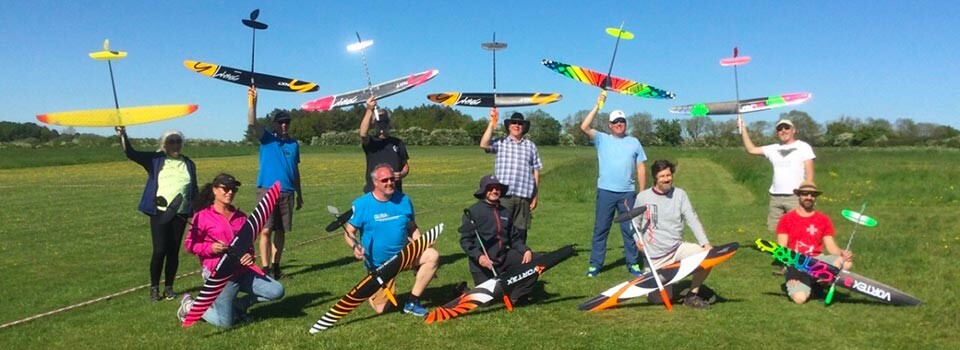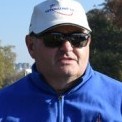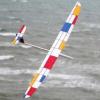
Meteorology For Glider Pilots
By Gary B, in Articles,

I used to teach trainee glider pilots basic meteorology to get them through the ‘Bronze C’ examination, as part of my Private Pilots Licence training I also had to take an exam on meteorology. The difference between the two exams is that the glider pilot one is aimed at understanding soaring conditions and the PPL one is aimed at keeping the pilot out of trouble.
Chatting with other F3J pilots at competitions last year showed that there are different levels of understanding of the weather, perhaps it is a boring subject but knowing a few basics might help.
Right then! Meteorology is a big subject but what we need to know as model glider flyers is manageable. Being able to read a weather chart is a very useful skill and probably more obviously, reading the actual conditions by looking at the sky at the flying site is the other.
Unavoidably there are some technical terms but I will try to explain them as simply as possible as we go along! Apologies if this is ‘egg sucking’ for some, it’s aimed at readers with limited knowledge of the weather.
Air mass
This is the term to describe a very big lump of air! We say ‘the air mass is coming off the sea’ or ‘the air mass is stable’. The British Isles has a maritime climate (greatly affected by the surrounding sea), air can come from four general directions, Polar Maritime (Iceland, cold and wet), Polar Continental (Norway, cold and dry), Tropical Maritime (Bay of Biscay, warm and wet) and Tropical Continental (France/Germany, warm and dry). There is a fifth direction now, Arctic, you can guess what kind of air comes from there!
Pressure systems
We have two general types of pressure systems in the UK, low pressure (also known as a depression or ‘low’) and high pressure. Air always moves from the high pressure area to the low and the systems rotate due to Coriolis force (caused by the Earth’s rotation, the same force that makes your bathwater swirl down the plug hole!)
Atmospheric pressure is measured in Millibars (mb), the worldwide average sea level pressure is accepted as 1013 mb.
Fronts and troughs
A front is the leading edge of an air mass, several hundred miles long and up to 100 deep, there are three types, warm front, cold front and occluded front.
A warm front generally means dull, damp conditions with stable air (overcast and raining!) where a cold front will be drier with unstable conditions (very likely to be thermic).
An occluded front is a mixture of both warm and cold fronts. The areas behind fronts are called ‘sectors’ so we say ‘cold sector’ or ‘warm sector’. German glider pilots call the cold sector ruckseiten wetter, literally ‘back side weather’. What they mean is the back side of the cold front where thermic conditions are best.
A trough is an isolated line of low pressure, often associated with stormy weather.
Lapse rate
Sounds technical but it is just the change of temperature with altitude! If the air mass is wet (saturated lapse rate) the temperature will decrease approximately 1.5 degrees C per 1,000 ft of altitude and if the air mass is dry the temperature will decrease 3 degrees C per 1,000 ft. The way to remember this (if you really want to!) is that drei (dry) is German for the number three. These are very general numbers, the lapse rate varies depending on the actual humidity of the air mass.
Under high pressure conditions there is often an ‘inversion’, this is where the temperature increases with altitude (the reverse of normality) and prevents thermal activity or limits its height. You can often see this as a purple haze where pollution is trapped in a layer.
Dew point
The dew point is the temperature that water vapour condenses into visible liquid water (i.e. a cloud!). This temperature relates to an altitude so we can work out what height the cloudbase will be (using lapse rates).
Technical again but very simply imagine that the ground level temperature is 10 degrees C, the air mass is saturated (humid) so it has a lapse rate of 1.5 degrees. If the dew point has been predicted as 4 degrees then the cloudbase will be 4,000 ft (10 minus 4 equals 6, 6 divided by 1.5 equals 4).
The difference between the ground level temperature and the dew point is known as the dew point depression, the bigger the number the higher the cloudbase. A high cloudbase indicates large, strong thermals, in the UK a summer cloudbase of 5,000 ft is fairly normal, Germany can be up to 9,000 ft (hotter land mass) and Australia can go to 12,000 ft plus.
A related rule of thumb that works well for soaring prediction is the difference between the lowest overnight temperature and the maximum expected the following day, a cold night followed by a hot day usually means strong thermals.
Orographic cloud
Related to the dew point is orographic cloud, this is the mist that suddenly forms on slopes (usually after we’ve walked a mile to get there!). As the air rises up the slope it cools and if the dew point at your level decreases then cloud will form suddenly from nowhere, this can be quite dangerous for full-size glider pilots, the brief is to know what direction is needed to fly away from the hill and use the compass to do that (swiftly!).
Insolation
Not to be confused with insulation this is the amount of sunshine (Sol) that the ground is receiving, a south facing slope gets the sunbeams directly on it and heats up, often making the air rise up the slope without any wind, this is known as Anabatic wind. It’s enough to keep full-size gliders airborne in the Alps and can be used for light weight models on our smaller slopes.
Cloud cover has a marked effect on insolation, if the sun can’t heat the ground then the thermals will die or decrease in strength. Late afternoon ‘spread out’ or ‘over development’ (becoming overcast) is common in the summer and is the curse of cross-country glider pilots. Out of interest cloud cover is measured in Oktas (eighths) so a half covered sky is reported as four Oktas.
Diurnal variation
Diurnal variation is a posh term used to describe the difference between day and night weather conditions that are affected by the sun. Obvious effects are the drop in temperature at dusk and a drop in the wind speed which free flight model flyers wait for when they are trimming.
Hot air balloonists fly in the mornings and evenings, taking advantage of the effect.
Perhaps bundled in with this is ‘maximum heating’, the time when the ground has got as hot as it is going to get, usually taken as 1 or 2 o’clock, slightly after the sun has passed its highest point in the sky (Zenith!).
Weather charts
The nice pictures provided by the BBC and Met Office are good enough for us. This one is from June 2012.
Weather chart from the BBC
Chart explanation and notes:
Isobars: Isobars are lines connecting areas of equal atmospheric pressure, the closer they are together the windier it will be. On the chart they are the thin black lines with the millibar value written on them.
Fronts: Warm fronts are marked in red with semi-circles facing the direction of movement, cold fronts are blue with triangles (icicles!) also facing the direction of movement.
An occluded front is shown in purple with a mixture of semi-circles and triangles.
Trough: A trough is shown as a thick black line (over France).
From this chart I would expect good soaring conditions in Brittany and Cornwall.
At the flying site
Armed with all this gen we have looked at the charts and decided that it will be good for a trip to the field (lots of thermals) or slope (lots of wind and thermals!).
There are still some weather related decisions to be made at the flat field flying site, ‘reading the air’ is often mentioned in model soaring books. What this means is taking a few moments before launching to work out where the best lift might be and formulate a plan to get there without losing too much height.
On a good day there is a thermal under every cumulus cloud, a problem for us is that the thermals rise from the ground at an angle due to the wind so their source is probably quite a distance upwind, directly underneath a cumulus cloud is likely to be sinking air. It might be worth having a look above or downwind to see if a cloud is sitting on a thermal column that is much closer. Quite a guessing game but it’s the part of the sport (F3J) that I enjoy the most and still have a lot to learn.
The strength of the wind can vary throughout the day, probably the biggest effect I notice is in the lower end of the landing circuit, too much spare height with no headwind makes hitting the tape tricky! I have watched many full-size gliders land downwind, quite remarkable at an airfield with two very dayglo orange windsocks!!
I hope this article is useful, there is obviously a lot more to it, meteorology is covered in the older soaring books by Dave Hughes and George Stringwell etc, not always easy to get hold of nowadays. A very good book is ‘Meteorology and Flight’ by Tom Bradbury, available from the British Gliding Association online shop or Amazon etc.
If all else fails follow the birds, there’s a friendly Red Kite at my home field!
Cheers
Gary Binnie
- Read more...
-
- 0 comments
- 3,902 views















